The iPhone 6 Plus is the latest and greatest flagship from Apple and it encompasses the company’s first attempt at a smartphone with a large display. Even though Apple tried to make the iPhone 6 Plus easily useable by adding a one-handed mode to the features, it didn’t really stick that well. Nonetheless, the iPhone 6 Plus sold in record numbers, so there must be something here that people like. The iPhone 6 Plus release date coincided with the iPhone 6 and iOS 8 release date, and with the first tease of the upcoming Apple Watch. The iPhone 6 Plus is the phablet edition of the flagship, Apple launching a smaller iPhone 6 alongside it.
The iPhone 6 Plus sold surprisingly well and demonstrated the fact that smartphone enthusiasts are getting more into phablets by the day. While up until recently, smaller displays were just fine, people seem to be becoming more and more interested in massive displays like that of the iPhone 6 Plus. Not to say that Apple is a trendsetter in this matter, but it did gave the trend itself a boost. People were starting to remark the nice features of the large Galaxy Note 4 and Galaxy Note Edge at IFA Berlin and once they were launched, everybody was checking out bigger displays in the stores. That’s when Apple came out with the iPhone 6 Plus, in an attempt to draw in Android fans with a flare for phablets. While one might have thought that the iPhone 6 Plus release was intended for Asia customers who have been into phablets for a long time, the handset caught up extremely well in the U.S. and Europe as well.
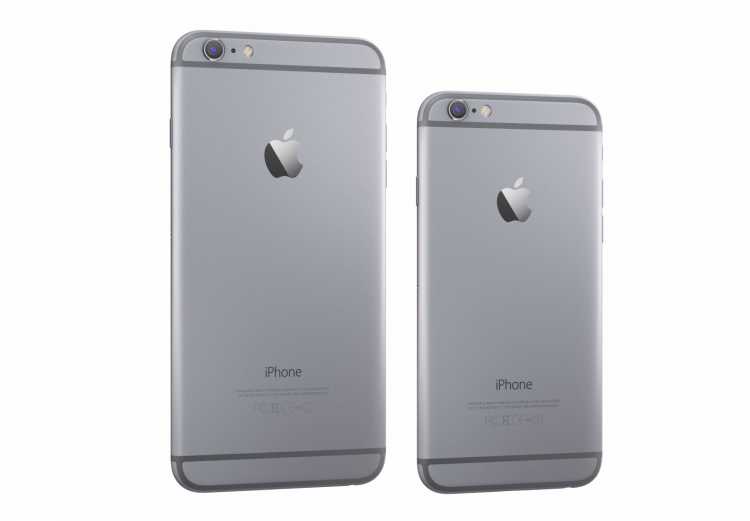
The iPhone 6 and the iPhone 6 Plus, side by side
Apple launched Apple Pay and introduced HealthKit and HomeKit alongside the new smartphone launch and consequently endowed the iPhone 6 Plus and its smaller counterpart with NFC. The NFC chip in the phones is exclusive to Apple Pay at the moment, but Tim Cook will surely open it up to developers pretty soon, much like with TouchID in the past. In any case, the Apple iPhone 6 Plus came as a new demonstration of design meets high-end hardware and should merit a look inside, even though it is a bit on the expensive side.
If you put the iPhone 6 Plus side by side with the iPhone 5S or its predecessor, the difference is overwhelming, You get a thinner and lighter phone, designed for those of you who enjoy metal and a sleek feel of a phone in your hand. The chamfered edges on the side of the phone make the iPhone 6 Plus feel very nice in the hand, but they do make the phone much more slippery. Combine that with the enormous size of the phablet, and you can sometimes spell disaster. Dropping the iPhone 6 Plus is easier than with other phones, and deteriorating it is also easier since it’s one of the thinnest phones on the market. The plastic antennae lines on the back of the iPhone 6 Plus are similar to those on the HTC One M8, but in my opinion look horrifying on Apple’s flagship and it could have done without. Nonetheless, you can overlook that design flaw on the Space Gray version, on which it doesn’t look as obnoxious as it does on the Silver or Gold versions.
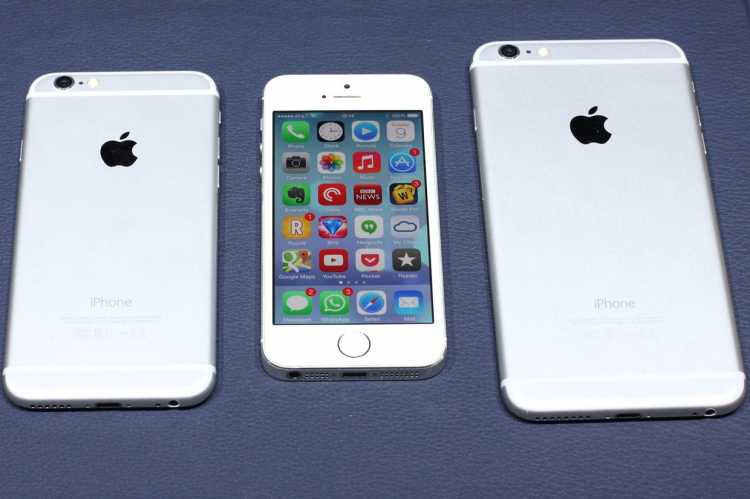
The iPhone 6 Plus compared to the iPhone 5S and iPhone 6
One of the smart design elements put on the iPhone 6 Plus is the sleep/wake button, which has been moved from the top to the side. That was a smart and necessary move on Apple’s part, because the phone is enormous and it would have been close to impossible to reach the button with one hand if it were placed on the top. But the protruding camera lens ruins the experience for some, since it is easily scratch-able and damageable, even though the lens itself is protected by sapphire crystal glass. When you set the iPhone 6 Plus down on the table, it does tend to wiggle around because of the protruding camera, but not as much as to make typing or swiping uncomfortable.
The iPhone 6 Plus has a 5.5 inch Retina display, which can actually fit the iPhone 5S in it. That means that you’ve clearly got a big phone on your hands, since bezels haven’t got that much smaller compared to its predecessor. The iPhone 6 Plus is actually as big as the Nexus 6, which has a 5.95 inch display. While many companies, including LG, are aiming for a bezelless look, Apple doesn’t seem to care that much about this area of design. In my opinion, Apple could have made the modifications necessary to slim down the bottom bezel and still keep TouchID there. It might have called for a redesigned home button, which would have been an issue for Apple, since one of the big staples of the iPhone is the round home button.
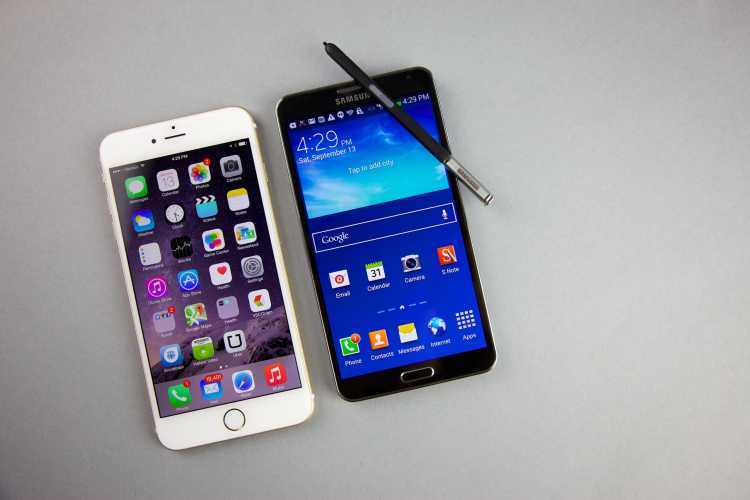
iPhone 6 Plus vs Galaxy Note 3
Even with the reachibility mode Apple has included in the iPhone 6 Plus, most people will find its use awkward and it actually makes the screen look slightly ugly, asymmetrical and out of place. Still, reachability can be useful at times, even though it’s not the most elegant solution. It just pulls the whole screen down so that you can reach it with one hand, but I repeat: it looks awkward. The iPhone 6 Plus was well-received by most customers, but there’s an equally large number of people who say that the phablet is just too big. Since it doesn’t fit in the average person’s pocket and can even bend out of shape sometimes, older Apple fans who have got used to the iPhone line-up the company has been pertaining for quite some time say that it’s just too big. Simple as that.
Since I’m a person with small hands and I’m not very fond of the idea of a fragile phone, which I consider the iPhone 6 Plus to be, my experience with the device was mostly negative. I cannot use it one-handed and reachability doesn’t help a lot. At the same time, I’ve slipped it out of my hand more than once and on one occasion, I actually thought I had lost it, even though it was in my pocket crease in my bag, it’s so thin and light. The design wasn’t very flattering to me either, but that’s more of a personal opinion. I’m not into metal, I don’t like cold phones, I don’t like thin and light phones and I don’t like chamfered edges that only contribute to me dropping it. Nonetheless, I love phablets, I love big screens and I don’t usually use a phone with one hand. Even a 4.7 inch phone is too cumbersome for me to use with one hand, since my hands are child-like. That being said, design-wise, I don’t like it. Display-wise, it’s optimal for a phablet-lover.
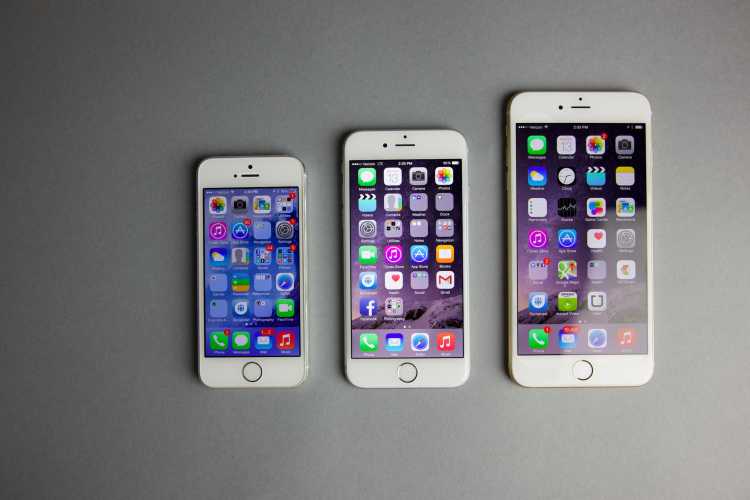
Once again, iPhone 5s, 6 and 6 Plus
The Retina display on the iPhone 6 Plus is excellent, giving you great viewing angles and outdoor visibility, alongside accurate and nice color reproduction. Pixel density is also quite high, at 401 ppi, which is more than enough to make you “not discern” between pixels. My viewing experience with the iPhone 6 Plus display was overwhelmingly positive, but I can still safely say that the LG G3 and Galaxy Note 4 have better displays. Nonetheless, the iPhone 6 Plus screen is still impressive and will not let you down even in bright sunshine, which I liked. I don’t use my phone outdoors, mostly because it tends to distract me and when I’m chilling somewhere in a park, I prefer conversation and observation rather than interaction with a phone. The split landscape view similar to what Apple utilizes in the iPad also comes in handy and I really love that feature, especially in apps that have been optimized for Retina resolution.
The homescreen on the iPhone 6 Plus has a landscape mode you can use so that you can view all your apps on a bigger space, which I find helpful and useful. I don’t enjoy toggling between homescreens, which is a must with the iPhone 6 display. The iPhone 6 Plus screen allows for more room to display websites, photos, videos and whatever else you want it to, making the whole viewing experience much more immersive, complete and comfortable. iOS 8 has contributed a lot to this with new widgets, notifications and animations, though. I’m actually a fan of what iOS 8 features can do on the iPhone 6 and iPhone 6 Plus, even though I can honestly say that I mostly disregard the Apple ecosystem.
The rotating homescreen feature on the iPhone 6 Plus does become annoying when in standby, because sensor pick up a certain position while the phone is one and stay that way when you take your phone out. That means that once in a while, your iPhone 6 display will not be in the correct position upon waking the phone. That didn’t bother me, though, since it doesn’t take the display long to adjust to the new position. Nonetheless, after it happened often enough, it got annoying.
iPhone 6 Plus specs include a new Apple A8 1.4 GHz Dual Core CPU with 64 bit architecture, 1 GB RAM and a quad core GPU, which means that performance will be spotless. Spot on. Even though Android fans might be put off by the dual core feature on the iPhone 6 Plus, as they are used to quad core CPUs clocked higher. Don’t fret, Android enthusiasts, because if you get your hands on the iPhone 6 Plus, performance will be among the few things that won’t actually disappoint you.
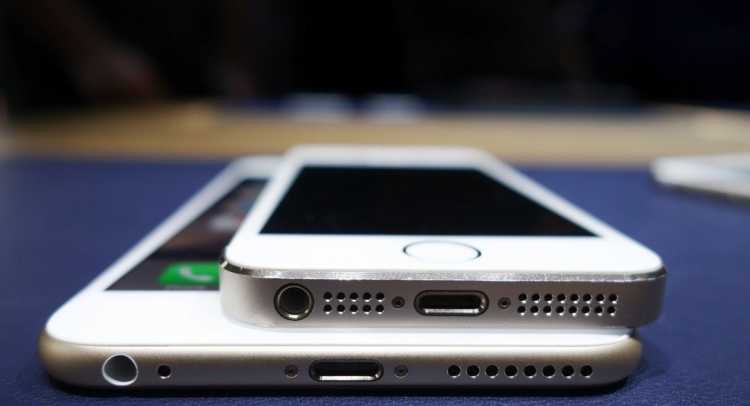
You can fit the 5S into the iPhone 6 Plus
With extensive gaming sessions, the iPhone 6 Plus can actually avoid overheating better than the Galaxy Note 3, HTC One M8 and LG G3. We all know that when you play a lot of games on your phone, the CPU throttles and puts out extra heat, or something in those lines. Anyway, your phone usually warms up quite a lot after an hour of non-stop Asphalt 8. Usually, though. With the iPhone 6 Plus CPU, the chassis will remain mostly cool and collected (get it?), with a single warm spot somewhere on the side of it. Still, it doesn’t get as hot as other Android flagships over there. The HTC One M7 overheats so much that it can actually hurt you (rarely). You won’t have that problem with the iPhone 6 Plus, at least not for the first two months – since that’s how long I had Apple’s bigger flagship.
One disappointing part of the iPhone 6 Plus is the RAM, which is only 1 GB. That is usually enough, but Apple could have done much better since they managed to put a dual core 64 bit CPU clocked at 1.5 GHz into the behemoth. An optimal amount of RAM would have been 3 GB, but 2 would have been alright, too. Just so that 64 bit chip can be as future proof as it can get. That small iPhone 6 Plus memory means that multitasking is going to be a problem. That in turn means that you won’t be able to game, watch a youtube video with a cheat, browse about four different reviews about said game, send out a tweet about said game and post a screenshot on Facebook with your playing that game. Well, you can do it, but it will be a pain to do so. Refreshing will be mandatory every 5 minutes, which gets really annoying. But for those of you who aren’t power users, it shouldn’t be that big of a deal.
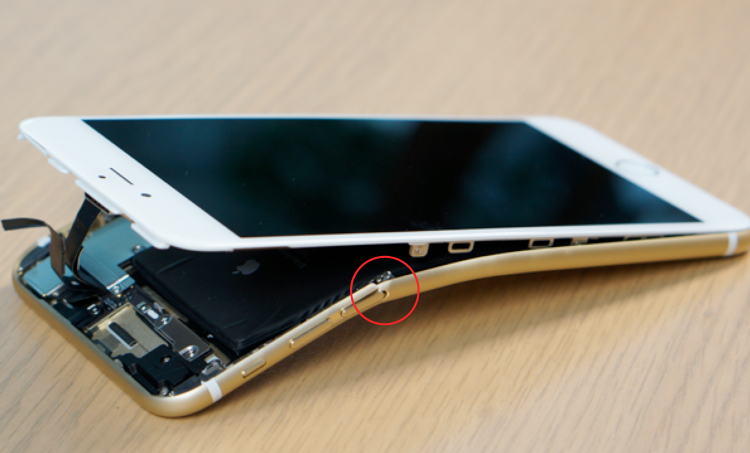
#Bendgate demonstrated
Compared to the iPhone 5s, TouchID on the iPhone 6 Plus has been considerably improved. TouchID is faster, more responsive and more accurate on the new flagship, which makes it easier and more convenient to use. The Galaxy S5 fingerprint sensor can’t be compared with the iPhone 6 Plus TouchID, to be honest. I tested both sensors out, and while the Galaxy S5 only recognized my print one time after ten tries, the iPhone 6 Plus TouchID recognized it 9 out of 10 times. While unlocking my phone with TouchID isn’t ideal, since I prefer the double tap or gesture functions found on the LG G3 or Oppo Find 7, it still came as a handy little feature.
Apple Pay is one of the key features on the iPhone 6 Plus, combining the NFC chip and TouchID. Sadly, I couldn’t test that out, since I don’t have a store that works with Apple Pay in my city yet. That being said, I will refrain from commentary upon the mobile payment platform Apple launched alongside the iPhone 6 Plus. I will say this though: why did Apple Pay kick off and fall so fast? Why did it surpass Google Wallet and other mobile payment platforms so fast? Because it’s been thought out by Apple, which demonstrates how consumers and customers gravitate among companies.
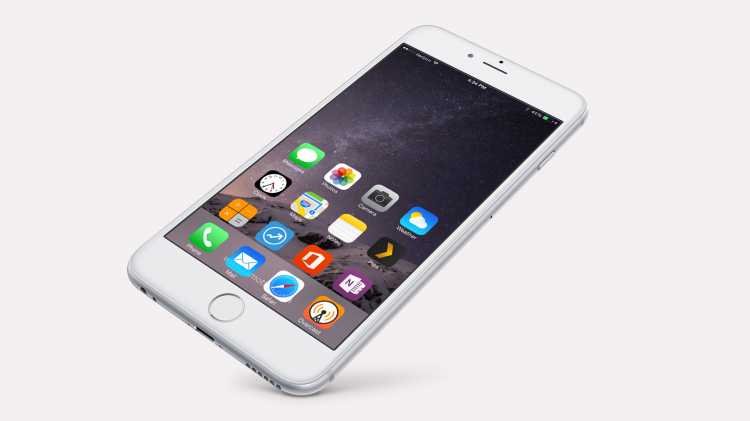
Reachability demonstrated. It doesn’t look as nice when you’re not on the homescreen
Even though the iPhone 6 Plus camera has the same 8 MP iSight sensor as on other iPhones, the optical image stabilization and considerable software enhancements somehow end up giving you high quality photos and videos. The iPhone 6 Plus camera creates shots with less noise, a lot of detail and doesn’t fall short when lighting is not optimal or contrast is high. Overall, I found the cameras on the iPhone 6 Plus to be above average, to say the least. I do think the Galaxy Note 4 and LG G3 take better photos, but you can only notice a difference when you put said photos side by side. Video is also great! I haven’t played a lot with the camera because smartphone cameras and photography altogether are not my thing. Honestly, I don’t choose phones based on cameras, because I like to use a dedicated device for photography and I don’t do a lot of it either.
The sound quality on the iPhone 6 Plus is pretty good, but it’s no match for the BoomSound speakers on the HTC One M8 or HTC One E8. A 2900 mAH battery is one of the best things on the iPhone 6 Plus, which holds up pretty well even after a full moderate day of use. Since there are few phones with large displays that last more than a day, the iPhone 6 Plus battery life impressed me pretty much. While I’m used to putting phones to charge overnight, each night, I didn’t have to do that with the iPhone 6 Plus. It would only drain after a day and a half of mixed use, which is pretty amazing since I abused it a lot.

Speakers and Touch ID up close
As for price, I wasn’t surprised to see that the iPhone 6 Plus price is pretty high. The iPhone 6 Plus price for the 16 GB version is $750, $850 for the 64 GB version and $950 for the 128 GB version. That’s a lot to pay for a phone that honestly isn’t as durable as the HTC One M8, Galaxy Note 4, Oppo Find 7, Nokia Lumia 1020, Galaxy S5 or even HTC One E8. Metal chassis or not, the design of the iPhone 6 Plus is flawed and will not keep that phone damage-free for more than a year or so. That means re-selling the iPhone 6 Plus won’t be as easy as it was with other Apple devices which were durable enough.
As a conclusion, upon two short months spent with the iPhone 6 Plus, without a case, I can say that I wouldn’t buy it. I would recommend it to Apple fans though, since they will inevitably succumb to the phablet trend someday. I don’t like iOS 8’s restrictions, I don’t like using proprietary accessories and peripherals just because Apple wants to slime its way into my pocket and bank account even more and I don’t like the fact that the iPhone 6 Plus specs are outdated. Yeah, I said it. It’s outdated.
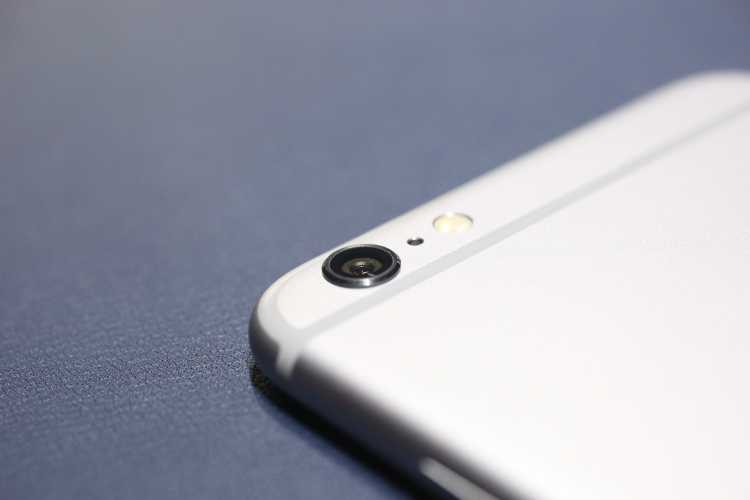
Here’s the protruding camera I mentioned earlier
While the Apple lover argument against Apple haters and Android fans was that Apple phones are so expensive because they are durable and high-end so far, this time, that argument won’t apply. It seems Apple doesn’t like people re-selling their items and keeping them in use for so long. They prefer selling newer an newer stuff to people, which is not surprising and wouldn’t be surprising from any company. Still, I think the iPhone 6 Plus’ shelf-life won’t pass a year and a half. I don’t think it will be re-sellable and I don’t think Android users will like iOS 8 and its restrictions. If you’re already grounded in the Apple ecosystem and have all your gadgets supplied by Tim Cook and co, go for the iPhone 6 Plus, because it’s not a bad phone. It’s just not as good as other flagships you can get for half that price.
[facebook][tweet][digg][stumble][Google][pinterest][follow id=”@iknow_today” size=”large” count=”true” ]
